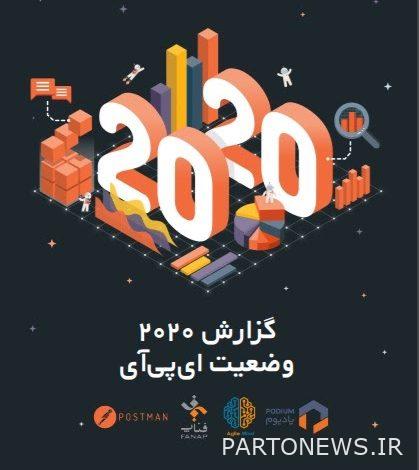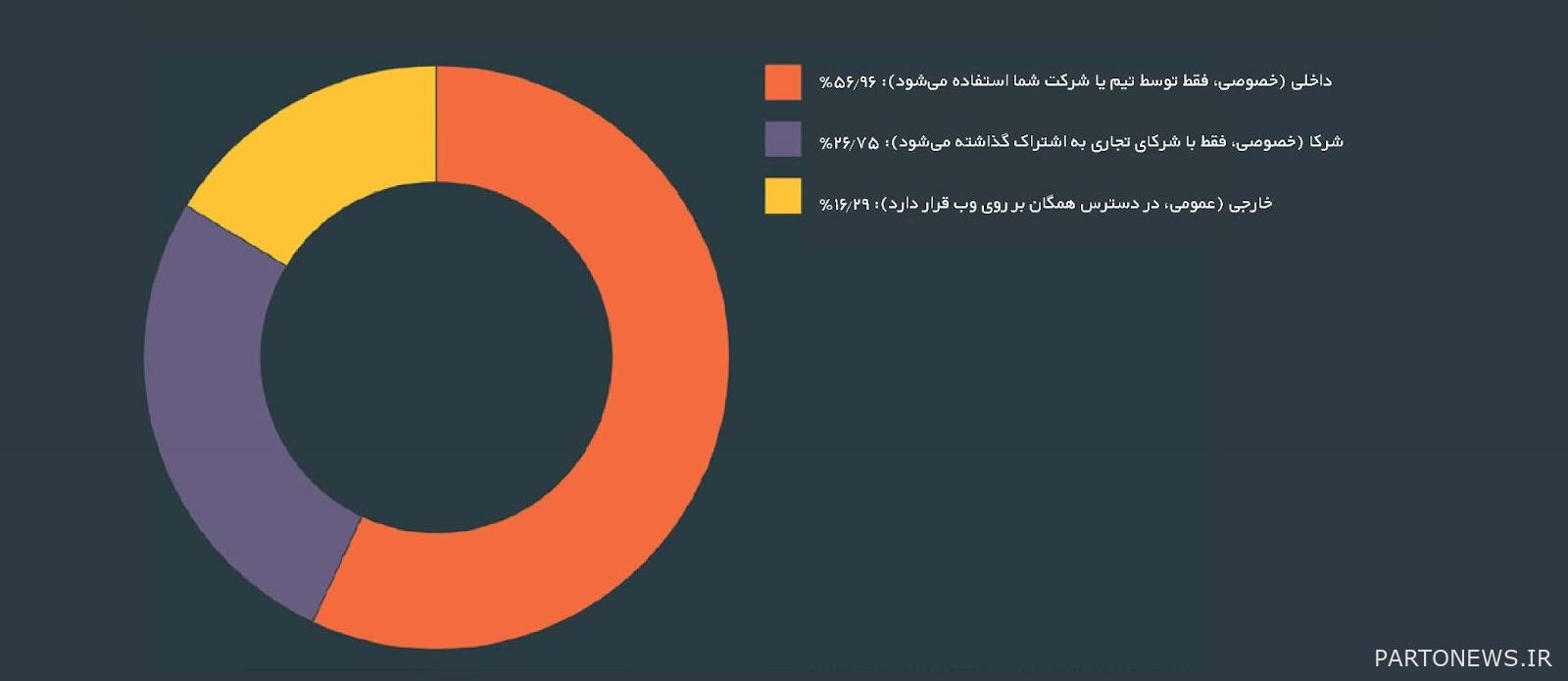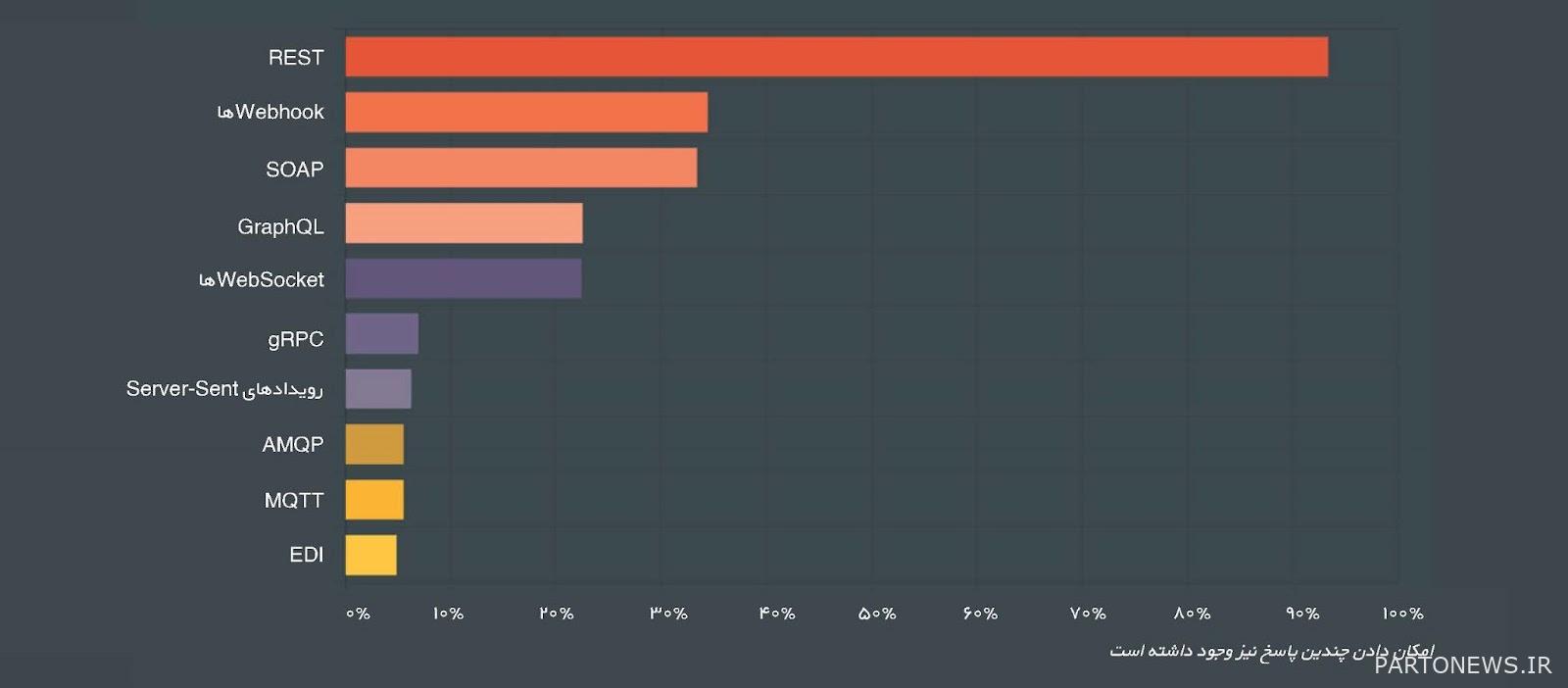Publication of Postman’s API status report in Persian

In the mid-1990s, the advent of new technology changed the way people lived. The birth of the Internet made our lives at this time very different from the lives of people of previous generations. Many people see the rise of the Internet as a technological revolution, and even its effects are comparable to the nineteenth-century industrial revolution. But these days, right on the Internet, another revolution is taking shape that will bring lasting change to modern life. This time, the main players in this huge change are APIs.
Take a closer look at the word API
You’ve probably heard of these connectors by now, but we might want to revisit the concept of API. More precisely, the API stands for “Application Programming Interface” and is a set of definitions and protocols used to develop and integrate software.
APIs allow your products or services to interact with other products and services, regardless of how those software products or services are programmed. Therefore, it can be said that APIs help to develop applications more easily and save time and money. Also, when you design and manage new tools and products, APIs help you have more flexibility and freedom of action, and give you opportunities to create new ideas.
Postman: Draws a picture of the API status
Every year, Postman surveys people in the field to get an idea of the state of the API industry. In 2020, more than 250 software developers, test experts, CEOs, and others participated in the evaluation and shared their insights on a variety of API-related topics. Zaban Chabak Company, with the support of Padium, has translated and published the latest version of this report in Persian. The full text of this report via this link Available. Let’s take a look at the analyzes presented:
Introducing the API-First concept
At the beginning of the survey, the question was asked: “What does the phrase API-First mean to you?”
There were a variety of answers to this question, none of which were completely satisfactory. Only 5% of respondents were unsure of what API-First meant, and 4% were familiar with the term. This number certainly indicates the growing influence and development of the API-First concept.
Who works with the API?
The main job title
About half of the people considered themselves software developers (FullStack programmer, slow programmer or mobile programmer) and about half of them had other plans in their organization. In response to the question “What is the most common role that APIs deal with?” It turned out that FullStack developers, who account for nearly 29 percent of respondents to this poll, are the first to deal with APIs.
API Strategies
Internal, partners or external
The percentage of internal APIs (56.96%) has increased compared to the previous year (52.8%) and therefore it is clear that internal APIs have become more of an organizational necessity. In the field of business, too, FullStack developers and mobile developers have stated that a high percentage of their APIs are internal. The largest percentage of APIs in the retail, manufacturing and gaming industries is also domestic. API-First leaders are also more inclined towards public APIs than internal APIs.
API technologies
Architectural style
Regarding the architecture style of APIs, a significant percentage of respondents (2.4%) were familiar with REST. More than a third of them use webhooks and about a quarter of them use websockets, so they have taken steps to use event-driven solutions. In the next categories are SOAP architectures with 4.5% and GraphQL with 1.5%. Percentages are. Respondents with more than 6 years of API development experience also use the REST architecture more.
Digital transformation
Respondents were asked how their organization invests in digital transformation initiatives. Only about 40 percent said they were working on digital transformation, although 14.5 percent said APIs had been used.
Podium: A marketplace for APIs and beyond
In Iran, Padium is one of the main sources of access to APIs and digital services for users and businesses. Since 2016, Pasargad Bank, in cooperation with Fenap Company, has keyed in the construction of a large platform called “Smart Land of Pod”. This platform provides infrastructure services, fintech, tourism, artificial intelligence and.. One of the successful subsidiaries of Pod Smart Land is API Marketplace and Padium Digital Services, which is designed to provide Pod platform services to the country’s digital ecosystem.
This bazaar includes a wide range of services of Pad and Pasargad Bank. But its scope of operation is not limited to these services. Padium strives to provide a wide range of services needed by digital businesses in a general space. This market has also given startups the opportunity to provide services. Any business that can provide its services as an API can also refer to the podium and provide its services alongside others by observing the service delivery levels. For more information about the podium and the use of the service, just visit the series Padium website hit.
How do you rate this article?




